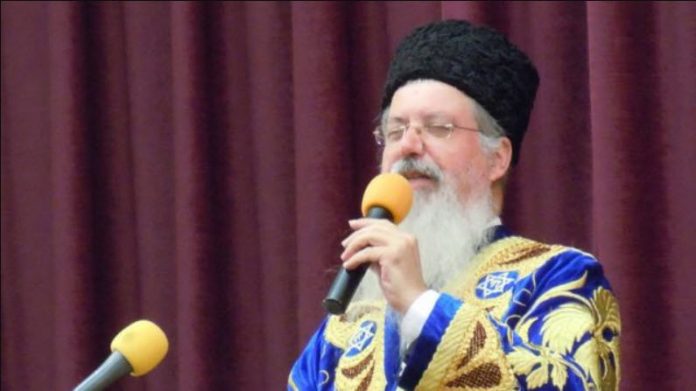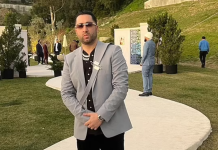
Abraham bar Hiyya (1070-1136) was a Jewish mathematician, astronomer and philosopher who was considered one of the most important figures of the scientific movement in which the Jews of Spain, Provence (France) and Italy served as intermediaries between the Muslim and Christian traditions.
He is also known as Rabbi Hayya, Savasorda ha-Bargeloni (“the Barcelones”) and Abraham the Spaniard, and he was given the Hebrew title of nasi (prince) of the Jewish community. He was born in Barcelona and died in Provence.
Among his original works is the first mathematical treatise in Europe that contains the solutions to the quadratic equation we still study today in basic algebra: ax2+bx+c=0! This work is known as Eibbur ha-Meshihah ve-ha-Tishboret (“Treatise on measures and calculations”) and was translated to Latin as Liber Embadorum (1145). This translation was important and received a great deal of recognition in the Middle Ages because it was the first time quadratic equations were seen in Latin.
This text by Abraham bar Hiyya is cited as one of the sources of Liber Abaci by the famous Italian mathematician Leonardo de Pisa (Fibonacci).
Other works by Abraham bar Hiyya include Treatise on Geometry; Foundations of Understanding and the Tower of Faith, an encyclopedic work that addresses arithmetic, geometry, optics, astronomy and music; Form of the Earth, an astronomical work on the formation of the heavens and Earth; and Book of Intercalation, his “popularization” work on the calculation of the Hebrew calendar.
He served as mathematician and astronomer to Alfonso I, known as the Warrior, the king of Aragon from 1104 to 1134, and he helped the counts of Barcelona to distribute their territories.
Into Bukhara
In our second section, we share an anecdote about a Sephardic community after the expulsion from Spain in 1492. This time our protagonist is a Jewish community whose roots go back long before 1492.
The Bukharian Jews are considered one of the oldest ethno-religious groups of Central Asia, and over the years they have developed a distinctive culture.
According to some ancient texts, Israelites began traveling to Central Asia as traders during the reign of King David more than 3,000 years ago.
When Persian King Cyrus conquered Babylon, he encouraged the Jews he liberated to settle in his empire, which included areas of Central Asia. In the Middle Ages, the largest Jewish settlement in Central Asia was in the Emirate of Bukhara.
In the beginning of the 16th century, the area was invaded and occupied by nomadic Uzbeks, who established strict observance of Islam. By the end of the 18th century, the Bukharian community was small, numbering between 3,000 and 5,000, was poor, and lived under the rule of a fanatical and harsh Muslim regime that enforced many religious edicts against it. The community’s spiritual well-being was in jeopardy because of government pressure to convert to Islam and physical isolation from any other center of Jewish life.
By the end of the 19th century, however, the Bukharians were a flourishing, prosperous community numbering nearly 20,000 people in more than 30 cities and towns throughout Central Asia. A small group had made aliyah to Jerusalem.
The religious revival began with the arrival of an emissary from Safed, Rabbi Yosef Mammon Maravi, and here is where we make the connection with our Sephardic diaspora.
Rabbi Mammon (also known as Rabbi Maimon) took it upon himself to rekindle religious observance, and he introduced the Sephardic liturgy to the Bukharian Jews.
Born in either Tetouan or Meknes in Morocco, Rabbi Mammon was a descendant of Jews expelled from Spain in 1492, and he was trained in the Spanish-Portuguese tradition.
As well as Hebrew, Arabic and French, he spoke Ladino in its Moroccan variant, known as Haketia. Ladino is a combination of Spanish as it was spoken in the 15th century and Hebrew; it also has incorporated words from the places of the Sephardic diaspora. In many ways it is similar to Yiddish; it served as the lingua franca of the Sephardic communities throughout the Mediterranean for over 400 years.
Rabbi Mammon made aliyah to teach in a yeshiva in Safed. During his search for money in 1793 he arrived in Bukhara. The region was under the control of Muslim fundamentalists who pressured the Jews to convert to Islam. The community was isolated from major centers of Jewish learning because of a policy of closed borders.
Rabbi Mammon decided to stay in Bukhara and dedicate his life to the Bukharian Jewish community. He established yeshivas, and his children continued his work.
Early 19th century travelers to Bukhara describe the impact of Rabbi Mammon on the culture and religion of the Bukharian Jews. Rabbi David D’Beit Hillel, emissary of the Ashkenazi Perushim community of Safed, met two Bukharian Jews who were on their way to Eretz Yisrael when he was in Baghdad in 1827. They told him about the activities of Rabbi Mammon. He testified that “the entire conversation was conducted in Hebrew, that they were scholars and well-versed in Jewish customs and Hebrew religious texts.”
Rabbi Mammon was highly thought of among the Bukharian Jews, who called him Or Yisrael (the Light of Israel). He saved them from spiritual assimilation, and because of his influence and that of the students who came after him, he developed a deeply rooted and faithful Jewish community.
Yosef Mammon died in Bukhara. Among his descendants we find author Jeffrey Moussaieff Masson and a former first lady of Iceland, Dorrit Moussaieff.
At Congregation Or VeShalom, this history is especially dear to our hearts. Our Sephardic congregation, founded by descendants of Jews who were expelled from Spain and whose members still can remember their parents and grandparents speaking in Ladino (and every Shabbat can hear the Berij Shemeh chanted in Ladino), has a large component of Bukharian Jews.
By some twist of fate, here in Atlanta we once again experience the solidarity and complicity of two Jewish communities apparently so far apart in geography and in diasporic history. However, once we know the trajectory of Rabbi Yosef ben Moshe Mammon, we understand that this union is not a matter of chance.
The Sephardic Corner is a monthly contribution of Congregation Or VeShalom to the greater Jewish community.
credit to AtlantaJewishTimes.com













